Report: Ford Cutting 8,000 Jobs as It Repositions for EVs

A report, citing unnamed sources, has claimed Ford is planning to eliminate up to 8,000 jobs in North America to free up capital for its ongoing transition to all-electric vehicles. Cuts are expected to begin later this summer and will allegedly target salaried employees working within the “Ford Blue” unit the automaker created to specialize in gasoline-driven vehicles.
This follows earlier statements made by CEO Jim Farley, who warned in February that the company had too many people on its payroll and specifically lacked the expertise required to reposition itself as an automaker specializing in EVs. Though this isn’t really unique to the Blue Oval, as the entire industry knew that manufacturing electric cars would require far less manpower.
Ford’s own industrial analysis has encouraged it to make claims that EVs would take roughly 30-percent fewer hours of physical labor to assemble than a traditional automobile using piston engines. EVs require fewer moving parts and allow for more flexible packaging, too. By leaning on skateboard platforms, EVs offer great modularity and parts sharing between models. In addition to streamlining production at the factory to a point where companies can enact layoffs without fear, this also means manufacturers will be less dependent upon quite so many individual suppliers.
While the production of batteries still necessitates tons of manual labor, automakers are largely outsourcing those tasks to other companies via strategic partnerships. The only real hiccup has been that battery costs have failed to go down as anticipated. Pricing increases on EVs are actually outpacing internal combustion vehicles right now. However the whole industry has remained confident that swapping to electrified lineups will offer broader margins, lower overhead, and allow them to avoid more regulatory fines from the government in the long run.
Though it remains a gamble, considering how many billions of dollars the industry has pumped into making the change. Numerous studies have shown that, despite EVs having staunch allies among those willing to be early adopters, the general public still isn’t all that interested in owning them. This is particularly true within North America where driving distances tend to be longer than other parts of the world. Government action has done a lot to encourage people to climb aboard the all-electric bandwagon, effectively subsidizing the automotive sector at the same time. It just hasn’t been at the pace originally envisioned by industry players, who assumed 2025 would be the year EVs reached full parity (cost, range, ownership, etc) with the combustion-powered counterparts. Meanwhile, some quadrants have grown concerned at the amount of influence swapping to EVs will ultimately give Asian battery suppliers.
But that’s not going to stop anyone from pushing forward. Automakers have seen how profitable cell phone companies have become and like the idea of being able to control the market in a similar manner. Swapping to EVs not only streamlines their side of the production process, it also opens the door for them to offer even more subscription-based features that can be unlocked via over-the-air (OTA) updates. We’ve already seen Tesla providing OTA updates that have added power to its vehicles. Other brand are following suit while they pioneer ways of hiding already installed features behind a digital paywall.
“EVs are simpler to make, more profitable, and higher growth,” Adam Jonas, auto analyst at Morgan Stanley, said in a note to clients back in 2020. “The traditional automakers, they can’t go a half-step towards EVs. It has to be all in.”
The report signaling 8,000 job cuts came first from Bloomberg on Wednesday. Ford spokesperson, Mark Truby, later told the Detroit Free Press that he could not confirm the Bloomberg report – though he likewise failed to deny it.
CEO Jim Farley similarly failed to suggest there would be no cuts during an attempt to address rumors about layoffs that no longer sound like they’re just rumors. His message was delivered in a video message issued to staff early on Thursday morning.
In the clip, Farley encouraged employees to remain focused on their work – adding that he was aware of reports regarding 8,000 job cuts planned for North America. According to staffers that had seen the video (and weren’t technically allowed to talk about it) claimed that the CEO stated that the company would need to reduce structural costs and undergo massive changes to remain competitive during the aggressive transition toward EVs.
Later in the day, Ford announced that an agreement had been reached with China’s Contemporary Amperex Technology Co. that would allow the business to manufacture 600,000 EVs by 2023. This is in addition to its existing relationship with South Korea’s SK Innovation and LG Energy Solutions. During a conference call about the matter, ent Thursday on progress involving supply chain and batteries. During a news conference call, auto analyst John Murphy of Bank of America Merrill Lynch asked about the job cuts.
"It seems like you need more people to manage this, maybe not less," he said.
"Believe it or not, to move fast in this space, smaller is better. A smaller team can move faster than a larger team,” responded Lisa Drake, Ford’s vice president of EV industrialization. “The Model E team is a little bit smaller than you might think. That allows the agility and the speed that we needed."
[Image: Ford Motor Co.]

A staunch consumer advocate tracking industry trends and regulation. Before joining TTAC, Matt spent a decade working for marketing and research firms based in NYC. Clients included several of the world’s largest automakers, global tire brands, and aftermarket part suppliers. Dissatisfied with the corporate world and resentful of having to wear suits everyday, he pivoted to writing about cars. Since then, that man has become an ardent supporter of the right-to-repair movement, been interviewed on the auto industry by national radio broadcasts, driven more rental cars than anyone ever should, participated in amateur rallying events, and received the requisite minimum training as sanctioned by the SCCA. Handy with a wrench, Matt grew up surrounded by Detroit auto workers and managed to get a pizza delivery job before he was legally eligible. He later found himself driving box trucks through Manhattan, guaranteeing future sympathy for actual truckers. He continues to conduct research pertaining to the automotive sector as an independent contractor and has since moved back to his native Michigan, closer to where the cars are born. A contrarian, Matt claims to prefer understeer — stating that front and all-wheel drive vehicles cater best to his driving style.
More by Matt Posky
Latest Car Reviews
Read moreLatest Product Reviews
Read moreRecent Comments
- Jkross22 I get Lexus much more now, especially this era. This seems to be the sweet spot for reserved styling, comfort and reliability. No turbos, integrated screen, hard buttons and knobs, good to great stereos, great seats. Still have some pangs of desire for the GS-F for all of the above reasons and V8 sounds, but this is the smarter choice.
- Canam23 I had a 2014 GS350 that I bought with 30K miles and the certified unlimited four year warranty. After four and a half years I had 150K miles on it and sold it to Carmax when I moved to France a little over two years ago. As you can see I ran up a lot of work miles in that time and the Lexus was always quick, comfortable and solid, no issues at all. It was driving pretty much the same as new when I let it go and, and, this is why it's a Lexus, the interior still looked new. I bought it for 30K and sold it for 16K making it the most economical car I've ever owned. I really miss it, if you have to drive a lot, as I did in my job, it is the perfect car. Some may argue the Camry or Accord would foot that bill, but I say nay nay, you really want the comfort and rear wheel drive of the Lexus. Keep it forever Corey, you won't regret it.
- SCE to AUX "...if there’s enough demand"If they are only offered as electric to begin with, how will Stellantis gauge demand - unhappy customers demonstrating at the dealers with torches and pitchforks?What a great way to add cost and reduce competitiveness, by making a propulsion-agnostic platform with a hundred built-in compromises.
- FreedMike Awfully nice car.
- Cprescott So is this going to lie and tell you that they have quality products at affordable costs that won't get recalled?

















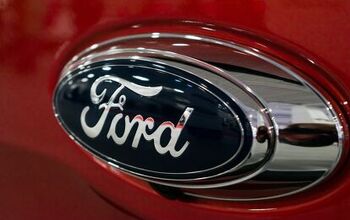
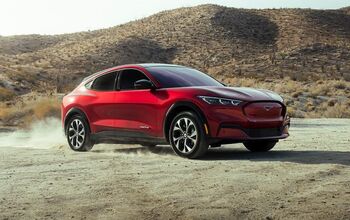

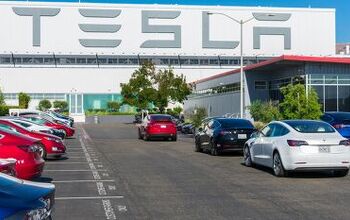





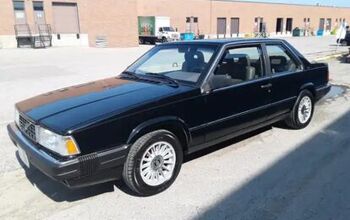
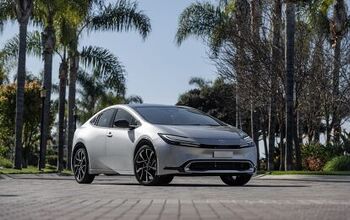



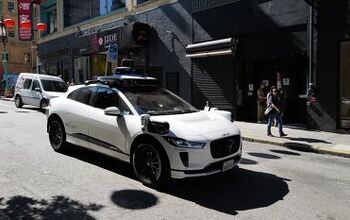


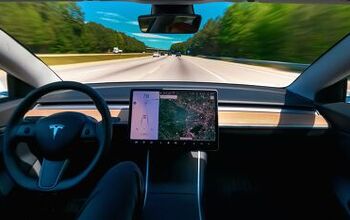
Comments
Join the conversation
A lot of it is also stock market driven. Electrics have the "potential" for huge market returns and hence high stock prices. Look at Tesla. Its Stock price has made Musk richest man alive. So while electrics in real world terms have small penetration in market, its potential and high possibility of stock prices force corporations to push hard to go that direction. In practice, we have to wait and see if public buys into this huge bet.
Old business needs to adapt to new business. Personnel changes are required.
So... does William Clay Ford Jr. stay or go?